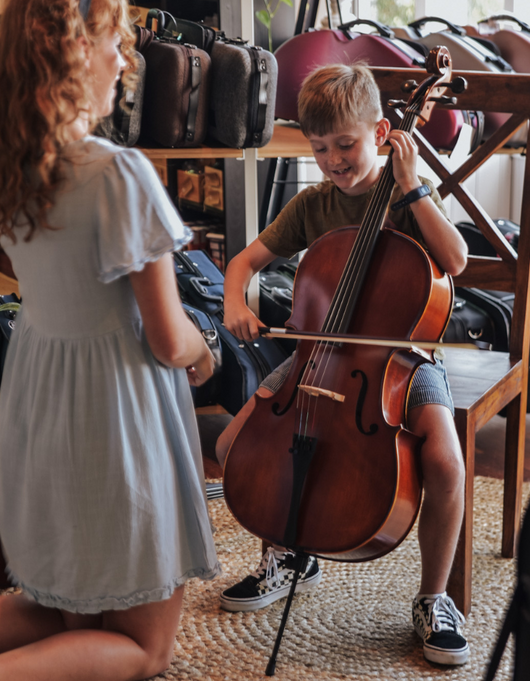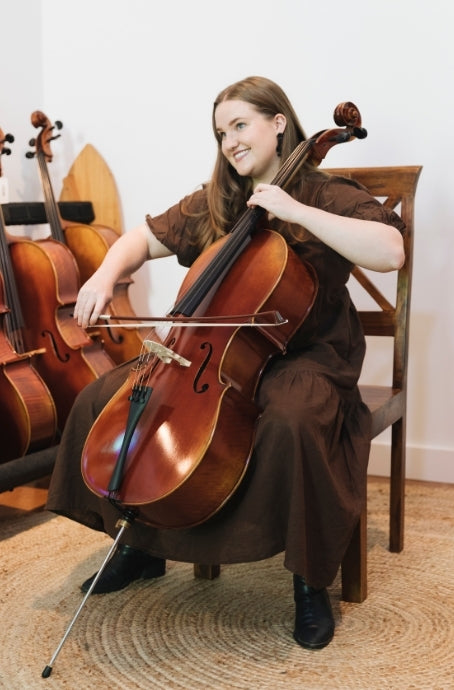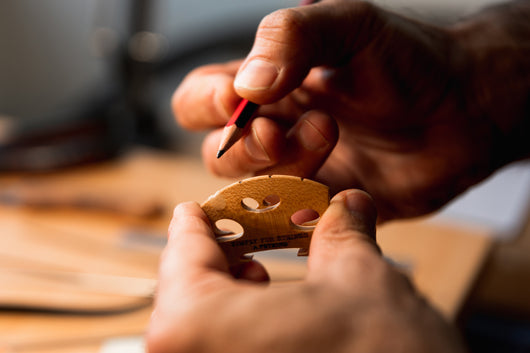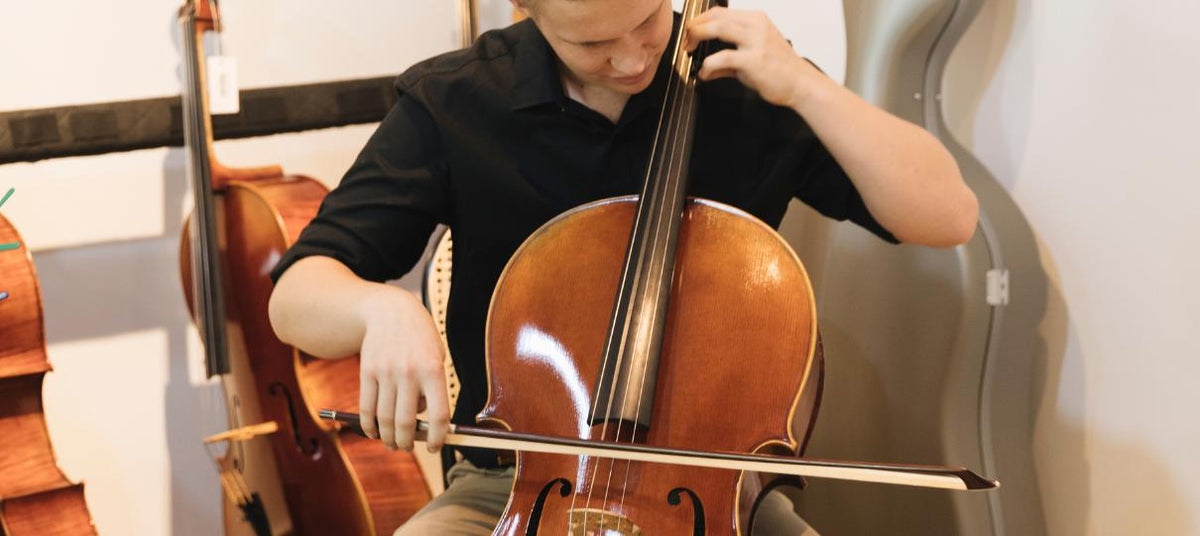Have you ever heard a weird sound, such as a choke, creak or squeak on your cello or double bass? You may have a wolf tone. Here’s a guide to what wolf tones are, and what you can do about it!
Over the years, we haven't met many cellos or double bass basses without a wolf tone. For cellos it's usually around the F or F# below middle C. It's most commonly noticed in 4th/5th position on the G string; it's at its worst when you play the same pitch on the C string - about one and a half octaves down the fingerboard; and usually is only an occasional nuisance in 1st position on the D string. We have seen cases where it also troubled next same pitch but an octave higher, so F/F# in 4th position on the A string, but that's more rare.
What causes a wolf tone? It's physics. Even perfectly constructed cellos will have a wolf tone. When playing, the vibration of the body of the cello and the vibration of the activated string will cancel each other out. It’s not due to a construction defect, soundpost or bridge issue, or even faulty strings. Often we find higher quality cellos, with excellent resonance, will have quite pronounced wolf tones.
Kevin Krentz explains that there is a "cycle of amplification and cancellation" caused by two different soundwaves, one coming from the top plate (belly) of the cello, and the other from the internal air which responds to the vibrations of the whole instrument.
One luthier has explained it as “it’s like the cello is trying to play two almost identical notes at the same time, based on the resonant frequency of the cello.” So, your resonant frequency might be very close to F# for example, so when you try to play a perfect F# the cello chokes. Have you ever played two A harmonics from different strings, while tuning, and noticed that if they're very close but not exactly in tune, there's like a beating in the air, in your ears? Michael, one of our resident cellists at Simply for Strings, has one student whose wolf is just minutely below F#, which gives them a great incentive to play perfectly in tune!
So you’ve got a wolf tone - what can you do about it? There’s a few products on the market that can help, plus some other adjustments to your cello.
Wolf tone "eliminators" are fairly cheap, and could possibly help your cello, however they do require trial and error. Some help some cellos and some don’t. Bring your cello in-store to try our various models to see if your wolf tone can be minimised.
The Krentz Modulator is great for many people and is what Michael uses on his own cello. Emily, another cellist at Simply for Strings, had success in minimising her cello wolf tone with a LupX brass eliminator. Some cellists use a mute, such as the Roth-style wire sliding mute, with success. This can be a more affordable option before trying something like the Krentz Modulator.
Squeezing the cello lightly can very slightly change the body shape and that would affect the wolf, so in some cases that can help as a temporary measure. More helpful fixes could be finding strings with a tension that suits the cello better, either higher or lower tension depending on your specific cello. Luthiers can sometimes adjust the soundpost, choose a different bridge or carve it differently, and some even make modifications internally. All this can be quite expensive.
Bow control can make a big difference. It's how you handle the wolf that matters. Pablo Casals refused to have any modifications to hide his wolf tone because he said that was part of its personality.
There are plenty of other factors that can be affecting your cello. These include physical things which could be changed, and minor adjustments to your technique.
Physical aspects include:
- String tension. Some cellists find that lower tension strings fix the problem; others have found they need higher tension. Sometimes it’s as simple as changing just one particular string. We offer a cello string library service where you can try strings on your cello before you buy. Learn more about this service here.
- Adjusting or changing the soundpost and bridge. We have a Makers Studio on-site who can examine your cello and provide you with their expert recommendations. Learn more about our luthiers here.
- The bow. Is your bow hair fresh and installed well? If the hair is aged, it could be affecting your sound. The bow stick itself: you could try different bows to see if that makes a difference. Thomastik suggests if you have a continuing struggle with it, maybe a “darker sounding bow model”. Check your bow tension. If it is too tight, that can affect the wolf.
- Surprisingly, different rosins can play a part also. It’s worth experimenting with these. We recommend trying Leatherwood Bespoke Rosin with your bow to see if it makes a difference. We have free in-store trials of Leatherwood Rosin - just book an appointment to try it today!
- Humidity/dryness can affect the instrument in many ways. This can be harder to control, read our blog post all about dry and cold weather tips.
Technique considerations can also help:
- Experiment to see if lighter bow pressure and placement (closer to fingerboard or to the bridge) can help control the wolf in your situation.
- Try varying your vibrato (size and speed) around that pitch and see if that also may help reduce the effect of the wolf.
For further reading on wolf tones, visit world-leaders in string manufacturing, Thomastik, for their blog post all about this topic or watch their video below. Not 100% sure if you have a wolf tone? Visit our friendly team at Red Hill who can assist you with everything cello.





















